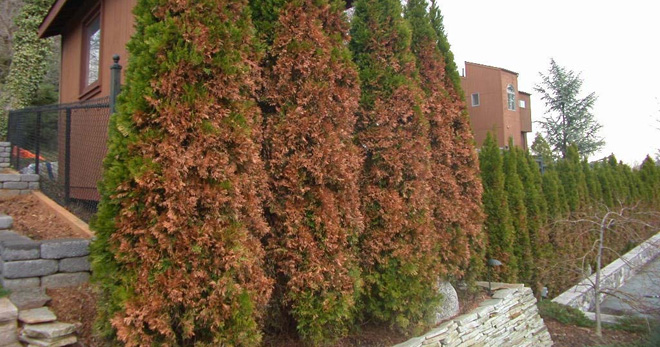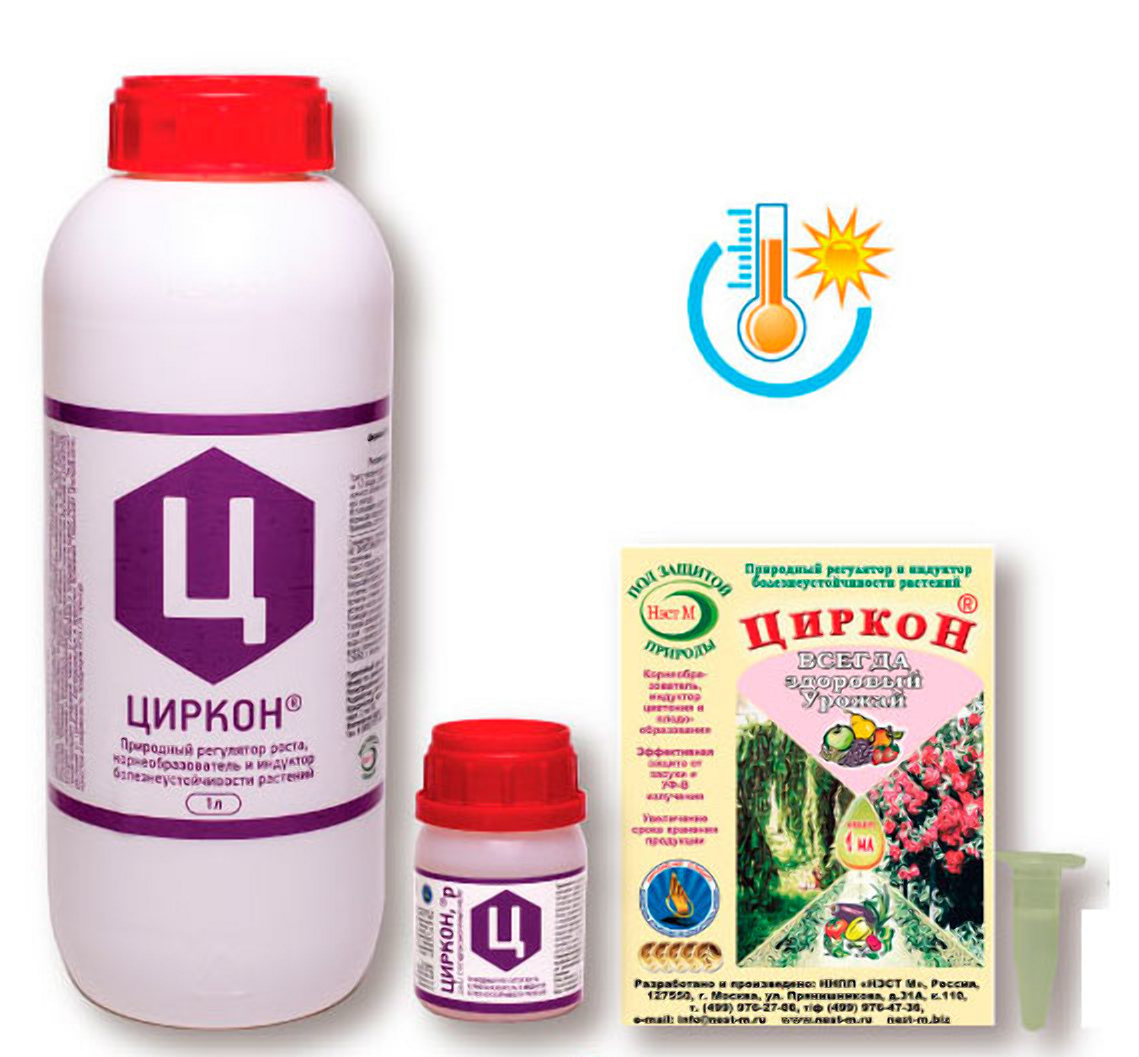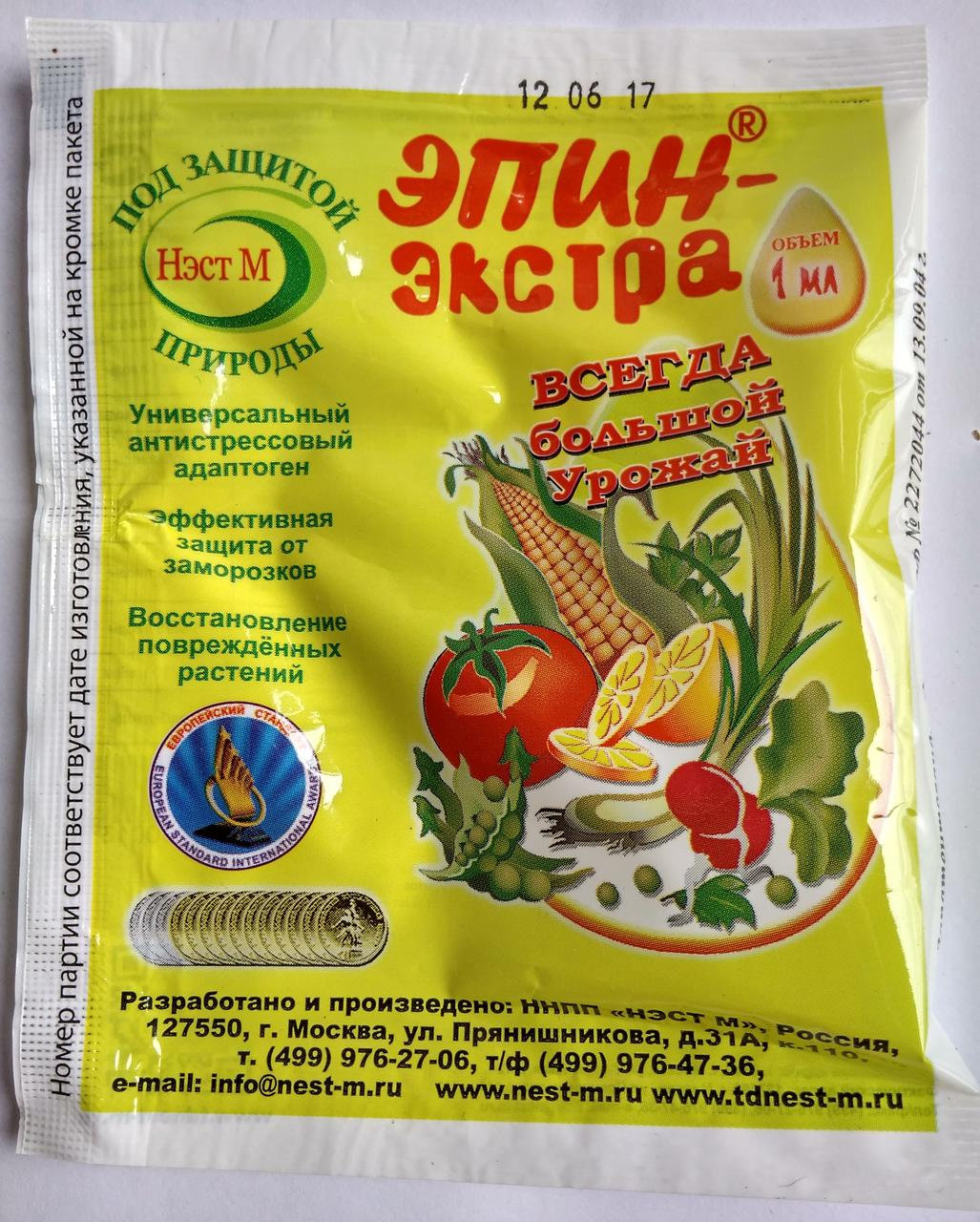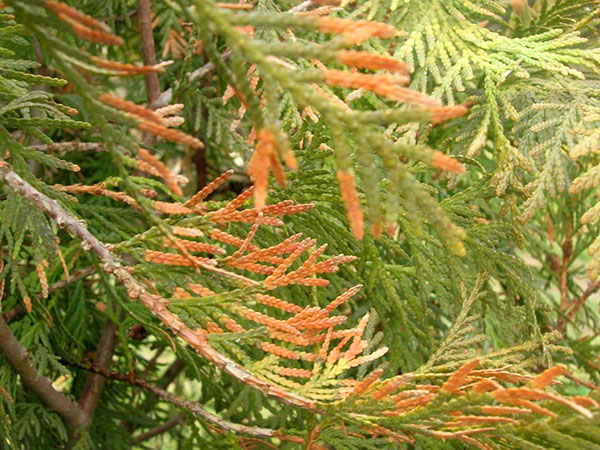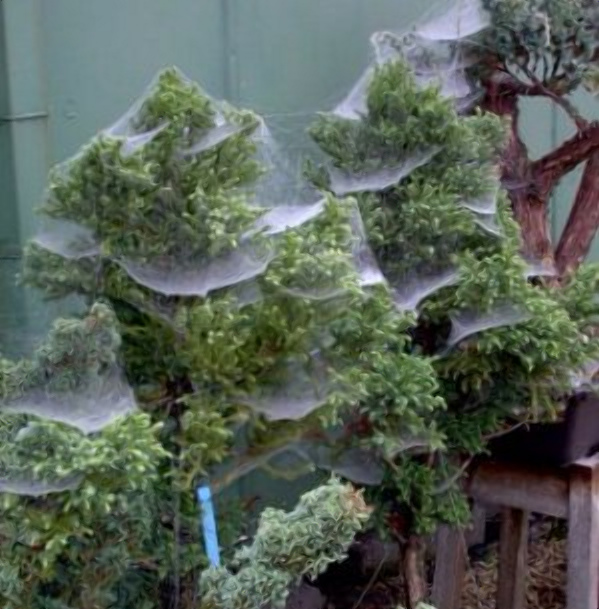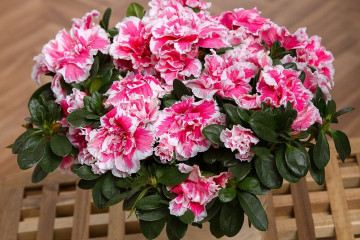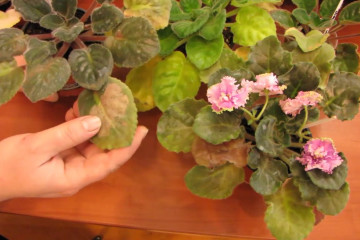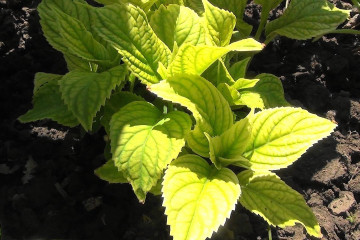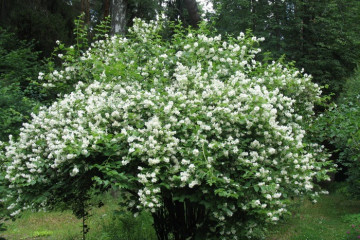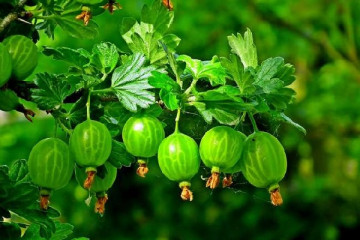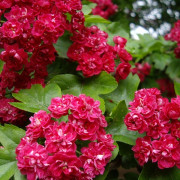Thuja turned yellow after winter - what to do, how to treat and how to fertilize
Content:
- Thuja turned yellow after winter: what to do
- Why does it turn yellow in spring
- Thuja dries: what can be done
- Reasons for blackening thuja after winter
- Preparations for the prevention of rust and shute
- Phytophthora
- Why thuja began to lose its decorative effect and began to turn yellow
- How to bring back a green look
- Thuja care if after winter it became red
- Pests
Often summer residents ask themselves the question: the thuja turned yellow after winter, what should I do? A withering shrub is a very unfortunate sight. In addition, such a state can even lead to death. To avoid losing your favorite tree, you should carefully examine it and establish the reasons that led to the loss of decorativeness. When the essence becomes clear, the tree needs to be urgently saved. How to do this, this will be discussed further.
Thuja turned yellow after winter: what to do
If after winter the thuja has turned yellow as a result of frostbite, then such branches are unlikely to be saved, most likely they will have to be eliminated.
However, most often yellowing occurs due to insufficient watering. In such a situation, the color of the tree can still be restored. For this, the plant is provided with regular watering. However, they do this with care so as not to overdo it.
Why does it turn yellow in spring
So why does thuja turn yellow in spring and what to do? This happens for several reasons. The main ones include:
- improper plant care;
- defeat by various diseases and pests;
- exposure to reagents that are designed to accelerate the melting of ice;
- intense vehicle exhaust;
- natural causes.
Thuja dries: what can be done
Sometimes experienced gardeners hear from beginners: what to do - thuja turns yellow and dries? As soon as the tree began to dry up, you need to immediately start saving it.
- You need to cut off all the branches that have time to dry.
- The growth point is also cut by 10 or 15 cm.
- Sour peat (with a pH of 3-4) is poured in a thick layer under the bush.
- Together with peat, buisk coniferous is introduced under the plant. This means for 1 bush will need about 20 g.
- In the spring, the plant is sprayed with epin, after two weeks, zircon is used.
Thuja diseases
The most common diseases of thuja, which provoke yellowing and wilting, and sometimes even its death, are various fungal infections. One of the dangerous diseases for thuja are rust, shute and late blight.
White bloom on thuja
White bloom on the shrub, which is accompanied by the appearance of yellowness and the gradual deformation of the branches, indicates the defeat of insects called hermes. These parasites are congeners of aphids. Hermes barely reaches 2.5 mm in length, but is able to suck all the juices from the tree and destroy it. To prevent this from happening, chemicals such as Aktara or Commander are used against pests.
Fungal diseases
Thuja is susceptible to fungal diseases, therefore, when planting a tree in the ground, you need to immediately take preventive measures to avoid trouble in the future.For this, when planting, the shrub is treated with a foundation solution. It is necessary to dissolve 10 g of the drug in 10 liters of water, and it is ready for use. This treatment can be repeated several times a year.
Bordeaux liquid will help to cope with fungal diseases. For preventive purposes, plants are treated with this substance twice a year: in early spring and before the onset of the first autumn frosts.
Reasons for blackening thuja after winter
It is not difficult to grow thuja, but in the process of its development, you can encounter not only yellowing of the needles, but also its darkening. Thuja turns black after winter for two reasons:
- due to the aforementioned fungal diseases;
- due to exposure to the feces of cats and dogs.
To establish the cause of the blackening, it is necessary to carefully examine the needles of the bush. When infected with fungi, the infection spreads gradually along the course of the escape. Affected needles will not turn black immediately. At first, it will take on a brown tint.
In the case of animals, the shrub turns black only at the point of contact with feces. In appearance, it resembles a splash of watercolors, which are scattered in a chaotic manner over the foliage.
If there are no cats or dogs in the yard, then you should not exclude the effect of feces. Neighboring animals can also invisibly resort to thuja. The needles that have suffered from their waste products will not recover. It will inevitably crumble. If a short bush grows in the yard and a large dog lives, then its feces can destroy the thuja. If, on the contrary, there is a tall tree and a small dog, then only the lower branches may suffer.
To save thuja from animals:
- It is necessary to rinse the branches with water. Maybe it will be possible to wash off the remnants of urine, in any case, this will definitely not harm the bush.
- The plant is fenced on all sides to prevent animals from accessing it.
- The shrub is treated with repellent aerosols, which are sold in veterinary pharmacies. From home remedies, you can use ground pepper, which neither cats nor dogs like.
- Dried branches are cut.
- The shrub needs help to recover. To do this, it is treated with drugs that stimulate growth. For example, zircon or epin may work.
Preparations for the prevention of rust and shute
Thuja with red needles provide special care after winter, since in this case the tree can be affected by diseases such as rust or shute. Most often, these diseases occur in the spring and affect young trees. However, infections spread throughout the year and can affect plants of different ages.
The affected branches must be removed, and the tree must be treated with fungicides that contain copper. Spraying is carried out in May and throughout the summer. If such processing does not help, you need to use a foundation. They are not sprayed with shrubs, but the soil is watered. Topsin-M is used against shute. Do this in the spring, as soon as the frost ends.
Phytophthora
The most dangerous disease of thuja is late blight. This disease first affects the roots, and then the tree begins to wither and dry out. Its trunk becomes soft from the inside and is covered with plaque.
Phytophthora develops in moist soil. For preventive purposes, the soil is treated with fungicides against it. If the plant is already affected, then it only needs to be dug up and destroyed. Regular cropping won't help here.
Why thuja began to lose its decorative effect and began to turn yellow
Four factors can affect the decorative appearance of a plant:
- inadequate care;
- natural causes;
- thuja disease;
- pests.
Incorrect fit
Thuja may turn yellow due to improper planting depth. Some summer residents deepen or expose the root collar too much.
Lack of fertilizers
Creeping thuja needs nutrients, but you also need to feed in moderation. An overabundance of minerals in the soil can negatively affect the appearance of the shrub.
Manure is suitable as an organic fertilizer for thuja. It is poured with water in a ratio of 1: 4 and insisted for about 14 days. One tree will need 3 liters of such a solution. Such fertilizer cannot be poured onto the base of the trunk. They watered the soil around the tree.
Of the minerals, biode or epin are used.
List of natural reasons why thuja turns yellow
Even if you adhere to all the rules and provide good care for the plant for a long time, plant and grow it correctly, the needles can still turn yellow. This is due to natural factors:
- aging process. The life cycle of needles lasts from 3 to 6 years. The tree then sheds its foliage. It gradually turns yellow from the trunk to the outside. There are very few such yellowed areas, therefore they are not very noticeable;
- change of seasons. Many varieties of thuja change their color to golden, red or brown. The exception is thuja smaragd, which, regardless of the season, remains green.
How to bring back a green look
To return to that former beauty, you need:
- ensure the correct watering regime, but this must be done with caution, excessive moisture will also not benefit the tree;
- cut off damaged branches;
- timely fertilize the soil.
Thuja care if after winter it became red
For thuja, as well as for many plants, spring burns are a great danger. Thuja after winter is very weakened, therefore continuous stay under the scorching sun rays is highly undesirable. In addition, in spring there is still snow on the ground, from which the ray is reflected, just like from a mirror, and even more burns the delicate foliage.
To restore a shrub, you need to build a small shelter for it and provide moderate watering. After that, the thuja will definitely grow new foliage, get stronger and completely acquire its natural color.
To avoid such troubles in the future, the thuja should be protected from the sunny side with a material that will not let the sun's rays through, but will provide good air circulation. To do this, you can use, for example, spruce branches.
How to reanimate thuja after winter
Often, after winter, it becomes necessary to help the tree to restore it. To do this, you should use the advice from professionals:
- they open it, but put a shelter above it, which will protect it from the sun's rays. Or you can cover the bush with gauze;
- excessive moisture will not benefit the thuja, therefore, water is removed from it with the help of grooves;
- the shrub is treated with epin;
- when the weather stabilizes, the dried branches are trimmed.
How to feed thuja
How to feed the thuja so that the bush grows quickly and flutters? It is necessary to apply fertilizers for thuja from yellowing. It is worth feeding the plant with ammonium nitrate.For such a solution, you will need 1 tbsp. a spoonful of saltpeter per 10 liters of water. Before adding top dressing, the soil is watered with water, and then a solution of nitrate is added to the soil. This procedure is carried out only in the spring and after it you do not need to use any more fertilizers.
How else to fertilize thuja in spring
In the spring, thuja need fertilizers that contain nitrogen. Also, the shrub needs macro- and microelements. You can use different dressings, which are available in liquid form, in the form of granules or powders. The main ones include: azofoska, platnon, compo, multivit and others. It should be borne in mind that most of these drugs release useful substances into the soil for three months, therefore, it is necessary to fertilize the soil with just such means only once a year.
Pests
Despite the fact that thuja has strong immunity, it still cannot resist some diseases and pests. The most dangerous parasites that are not against it are spider mites and speckled moths.
Spider mite
The spider mite is small in size, so it is difficult to notice. Mostly green parasites are found, sometimes orange or red individuals can be seen. The main sign that this parasite has attacked the thuyu is the cobweb.
Insects reproduce quickly, six generations can appear over the summer, they will quickly suck the juice from the thuja, and it will dry out. To avoid the death of a bush, you need to start treatment at the very first symptoms of defeat. If there are few parasites, and they have just begun to appear, then you can use tinctures of dandelion or garlic. In advanced situations, it is necessary to treat the shrub with chemicals. In the fight against spider mites, actellic, fitoverm, neoron, skeleton, etc. are suitable.
Speckled moth
Brown needles or the dying off of the top of a thuja often occurs due to the larvae of a speckled moth. To lay its eggs, the parasite gnaws at the leaves of the needles. It is very difficult to notice the pest due to its small size. The speckled moth barely reaches 4 mm.
If a yellow thuja grows in the yard, do not get upset right away. In any case, whatever happens to the bush is not a reason to wave your hand at the tree and calmly watch how it dies. In most cases, it can be cured. Every effort must be made so that this green perennial gains strength and again delights the eye with its greenery.
